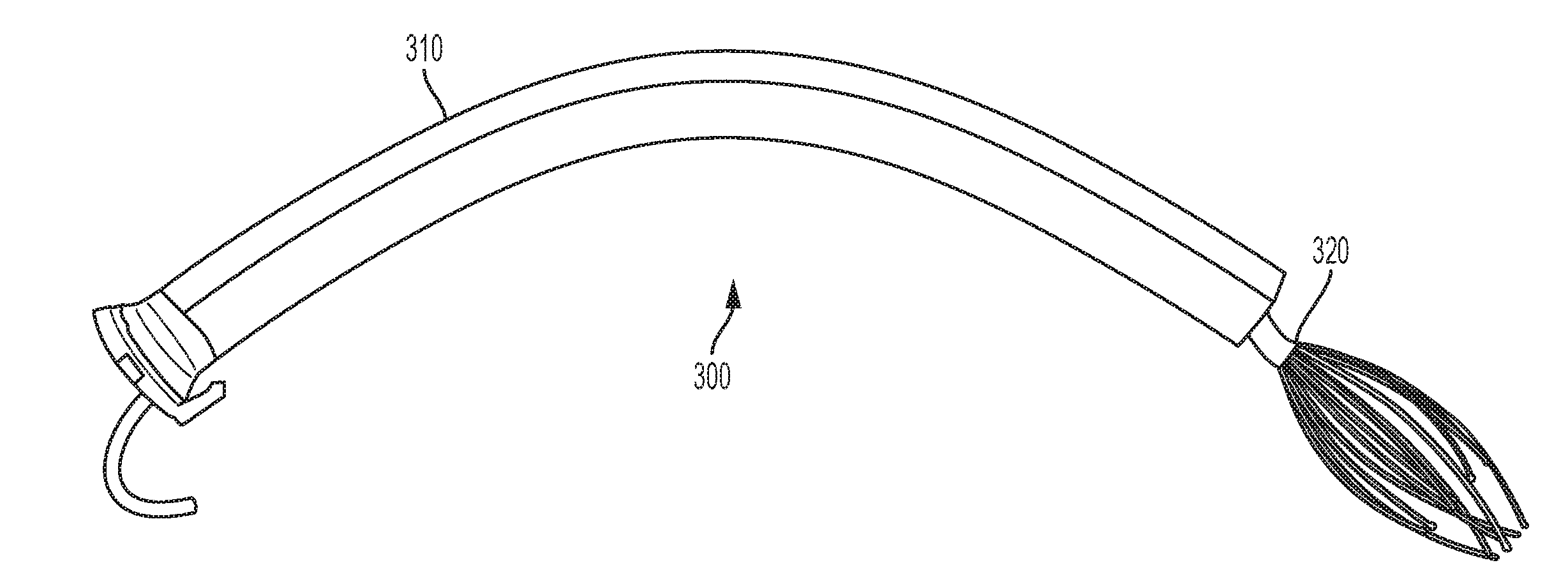Nasopharyngeal device for obstructive sleep apnea syndrome
a technology nasopharyngeal airway, which is applied in the field of obstructive sleep apnea syndrome melioration, can solve the problems of low long-term compliance seen in patients utilizing this modality of treatment, many patients refusing to use the unit at night, and no treatment has been found to be uniformly effective in osa. to achieve the effect of maintaining the patency
- Summary
- Abstract
- Description
- Claims
- Application Information
AI Technical Summary
Benefits of technology
Problems solved by technology
Method used
Image
Examples
Embodiment Construction
[0044]Obstructive sleep apnea syndrome is characterized by obstruction to an individual's ability to breathe while sleeping. The two areas of obstruction are the soft palate and the base of tongue. The nasopharyngeal airway is the most frequently obstructed area involved in patients with OSA.
[0045]One aspect of the present invention is a nasopharyngeal device to assist patients who suffer from OSA. The design is intended to be a non-intrusive nasal device that enables the patient to maintain patency of the nasopharyngeal airway by stenting open the palate, which, in the patient with OSA, closes upon laying down to sleep. By stenting open the nasopharyngeal airway with an embodiment of the present invention, the patient maintains his or her ability to breathe in a recumbent position.
[0046]Currently, the gold standard of treatment for OSA is continuous positive airway pressure (“CPAP”). However, the obtrusive, claustrophobic nature of the various facial interfaces causes many patients...
PUM
 Login to view more
Login to view more Abstract
Description
Claims
Application Information
 Login to view more
Login to view more - R&D Engineer
- R&D Manager
- IP Professional
- Industry Leading Data Capabilities
- Powerful AI technology
- Patent DNA Extraction
Browse by: Latest US Patents, China's latest patents, Technical Efficacy Thesaurus, Application Domain, Technology Topic.
© 2024 PatSnap. All rights reserved.Legal|Privacy policy|Modern Slavery Act Transparency Statement|Sitemap



